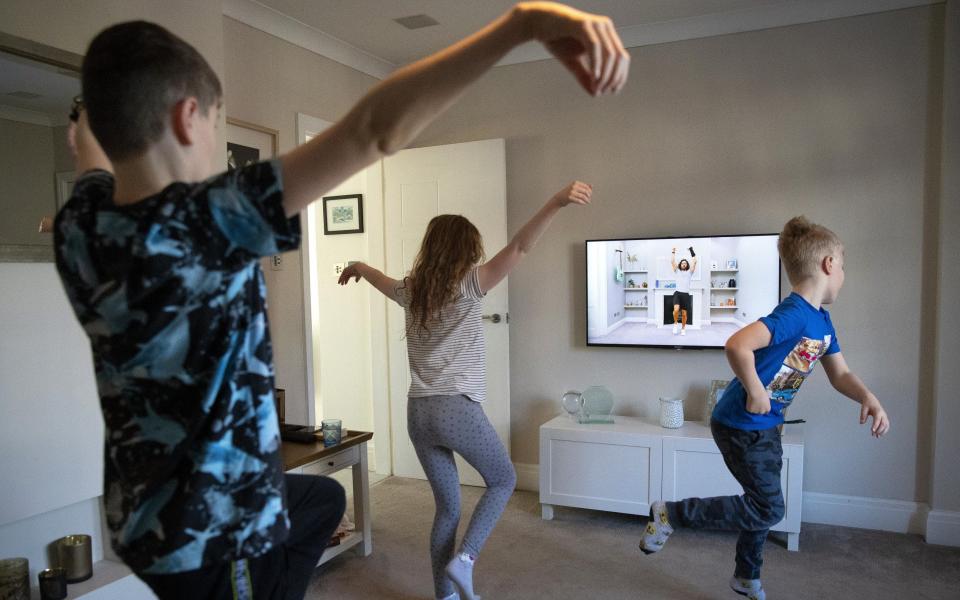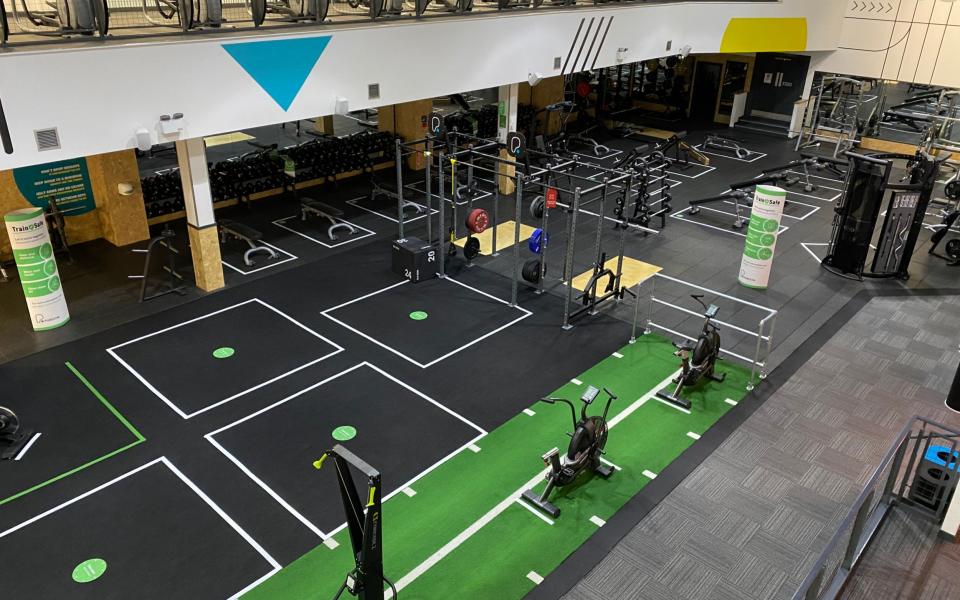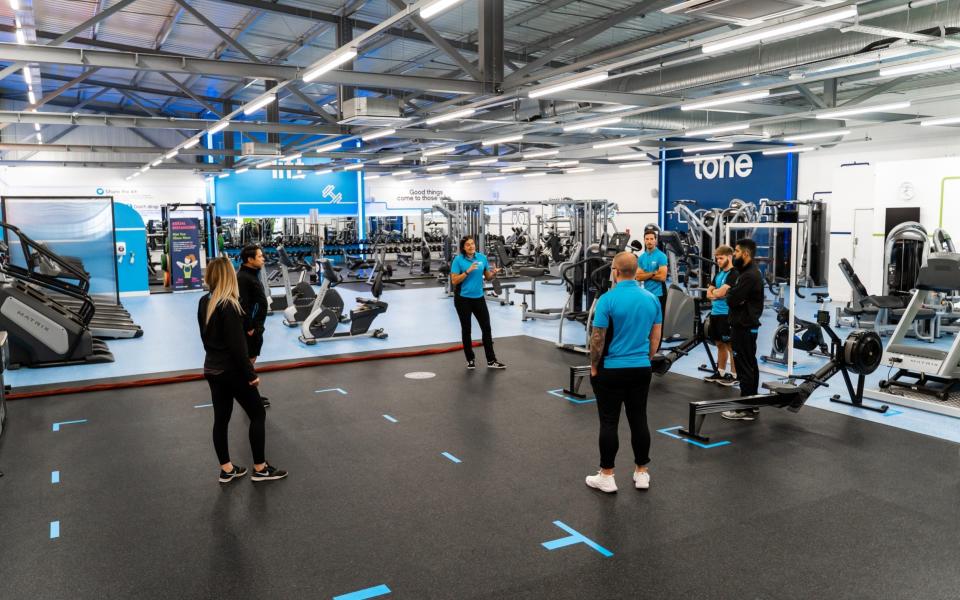Gyms doing heavy lifting to be fit for purpose post-lockdown

At 9am on Monday, March 23, hundreds of thousands of families worked out together as fitness instructor Joe Wicks live-streamed his first virtual PE lesson into lockdown living rooms.
The video has since amassed almost seven million views, and Wicks’ daily PE lessons have become part of the routine for children and adults trapped at home.
The pandemic has forced millions to improvise fitness regimes as the closure of the UK’s 7,000 gyms has seen around 10.4m memberships put on hold. Demand for bikes has surged, while running has become increasingly popular.
According to department store chain John Lewis, online sales of sports shoes have surged 72pc during lockdown, while gym equipment has rocketed 496pc, and yoga and pilates equipment by 315pc. Now, however, gyms are busily preparing their sites in the hope they can lure members back when they reopen.
With social distancing rules set to remain in place, they know some people may be reluctant to return to sweaty fitness centres.

PureGym, the UK’s largest gym operator, is trialling the use of robotic cleaners to enhance its cleaning regime. The robots, which kill microbes with a zap of ultraviolet light, sell for around £50,000 each and have been deployed by the NHS across its Nightingale hospitals.
“They’re quite expensive and slightly tricky to use because everyone needs to leave the room when the UV light is blasting around; it’s sort of like sunlight on steroids,” says Humphrey Cobbold, chief executive of PureGym.
“We will probably use them if we have a situation where there’s an infection, or we believe there is somebody who has been infected and visited one of our gyms.”
PureGym, which also has gyms in Switzerland, Denmark and Poland, reopened sites in the former last month. The operator is adhering to the country’s two-metre social distancing rule by limiting the number of members allowed in at any one time, while removing around half of its cardio equipment such as treadmills.
Cobbold expects exercise classes which would normally have around 25 participants to be cut by half, while classes involving physical interaction, such as boxing and circuit training, will be removed from gym schedules.

He remains confident that members will be keen to return to its gyms, believing the pandemic will highlight the importance of staying active.
Analysts at Barclays point to a recent survey carried out by PureGym of more than 1,600 members as reason for optimism. Just over two thirds said they were either willing or very willing to return when gyms reopen, with only 14pc saying they were unwilling. However, a further 19pc said they were indifferent and Barclays warned this cohort could be potentially crucial to the chain’s future profitability.
According to industry body ukactive, around 2,800 gym facilities face permanent closure as income streams dry up during lockdown and outstanding rents and overheads rack up.
The threat of digital disruption and the stark reality of an economy in a deep recession are set to compound the pressures facing the sector even further. Ambitious expansion plans will be put on ice, while experts believe some city centre gyms could close as operators shift focus to residential sites to reflect home working.
London-listed operator The Gym Group has made negotiations with landlords among its top priorities since its 175 sites closed in March. Richard Darwin, the chief executive, says the chain has struck a number of deals to free up its balance sheet, including rent-free periods in exchange for extending existing leases.
The firm has been testing how its gyms will reopen under social distancing at a site in Northampton. The chain’s portal entry system will allow it to control the number of people in the gym at any one time and it will use this data to run a “busyness tracker” on its app so members can see if there is enough space before visiting.
Along with PureGym, analysts view The Gym Group as being among the best positioned to emerge from the crisis in reasonable shape, due to its strong balance sheet and low-cost, no-contract membership model.
Darwin believes there is an opportunity to poach members from more expensive rivals as consumers tighten their belts. “Some people that are paying more expensive memberships may realise they can still get a very high-quality product at a much lower price,” he says.
While the lower-cost operators may be able to use the pandemic as an opportunity to gain members, observers say the pandemic could leave some weaker players more exposed to takeovers.
Budget fitness chain Xercise4Less was last month put up for sale by its owners, which include BGF investment fund and Proventus Capital Partners, while énergie Fitness, which has more than 100 sites in the UK, has drafted in restructuring experts FRP Advisory to explore options for the business.
David Minton, director of the Leisure Database Company, says boutique fitness studios could be among those that struggle to reopen while people continue to work from home. “We keep hearing of businesses getting rid of office space and that is likely to impact boutique studios which have been focusing on opening sites in city centres with large working populations,” he says.
John Treharne, who is founder director of The Gym Group and chairman of boutique fitness brand Frame, believes operators with a larger proportion of younger members are likely to benefit most.
“People who are less concerned about the effects of the virus tend to be younger people,” he says. “Those businesses who have a lot of millennial and Generation Z members will come out stronger because their customer base is likely to come back quicker.”
While fitness chains appear optimistic about demand, the presence of digital players will continue to disrupt the sector.
Earlier this year, The Gym Group invested £1m in Fiit, a start-up fitness app which counts celebrities such as Fearne Cotton as ambassadors.

As well as giving its members access to the app, The Gym Group is preparing to use Fiit’s digital capabilities within its fitness centres.
The company is planning to roll out “fit pods”, which will allow members to connect their phone to a video screen within a semi-enclosed booth and do the same workout they would do at home, but with the use of equipment available in the gym.
Darwin says plans to introduce the pods were already in place before lockdown began, but admits they will help the firm in adapting to a post-lockdown world.
Some remain less convinced about the long-term impact of online’s influence, however.
“If you go back to the Eighties, Jane Fonda’s workout was the top-selling VHS video of all time, so people have always been exercising at home,” says PureGym’s Cobbold.
“But for many, leaping around in the living room in a flat you share with three friends or your family isn’t sustainable in the long term.”

